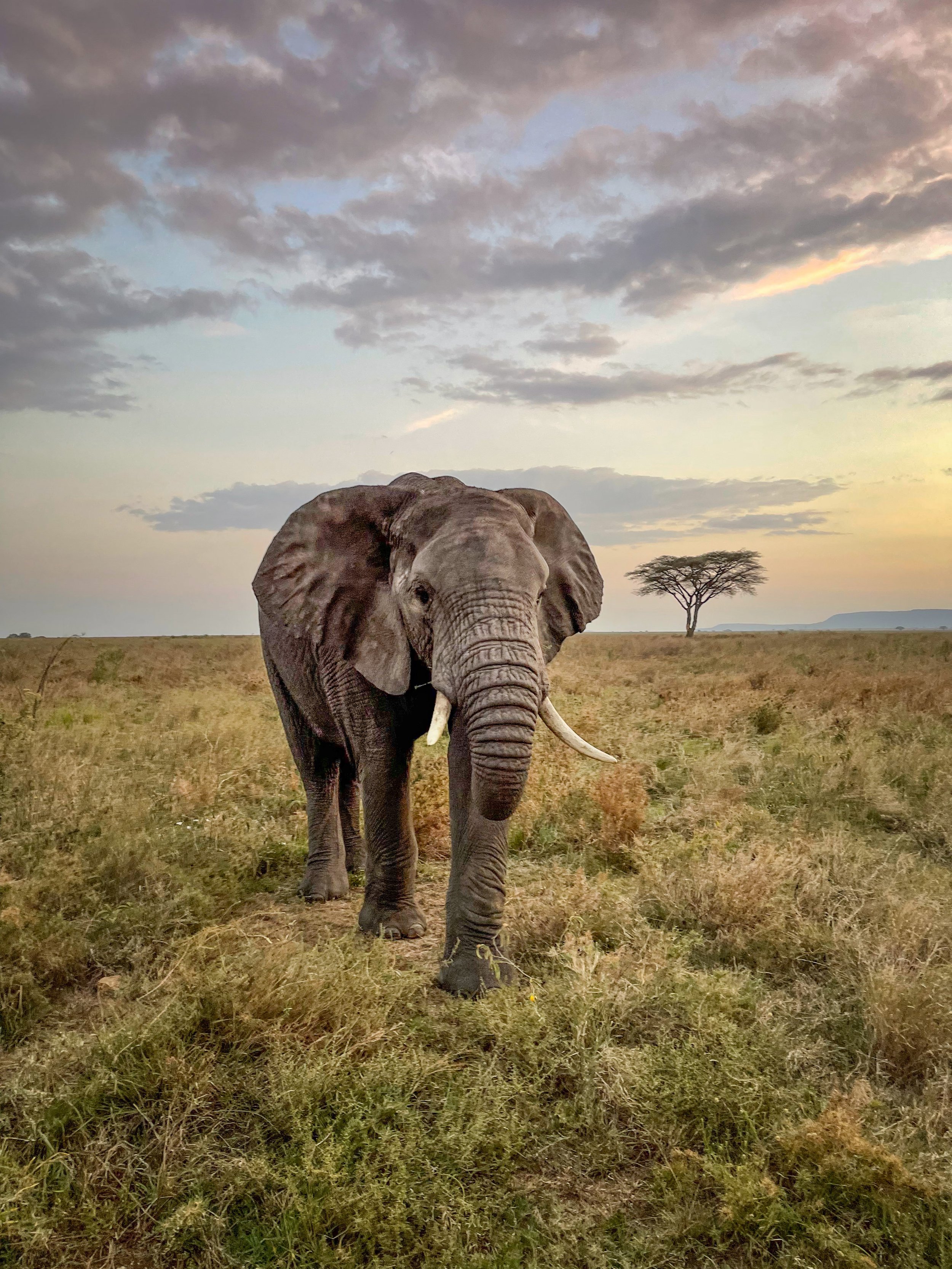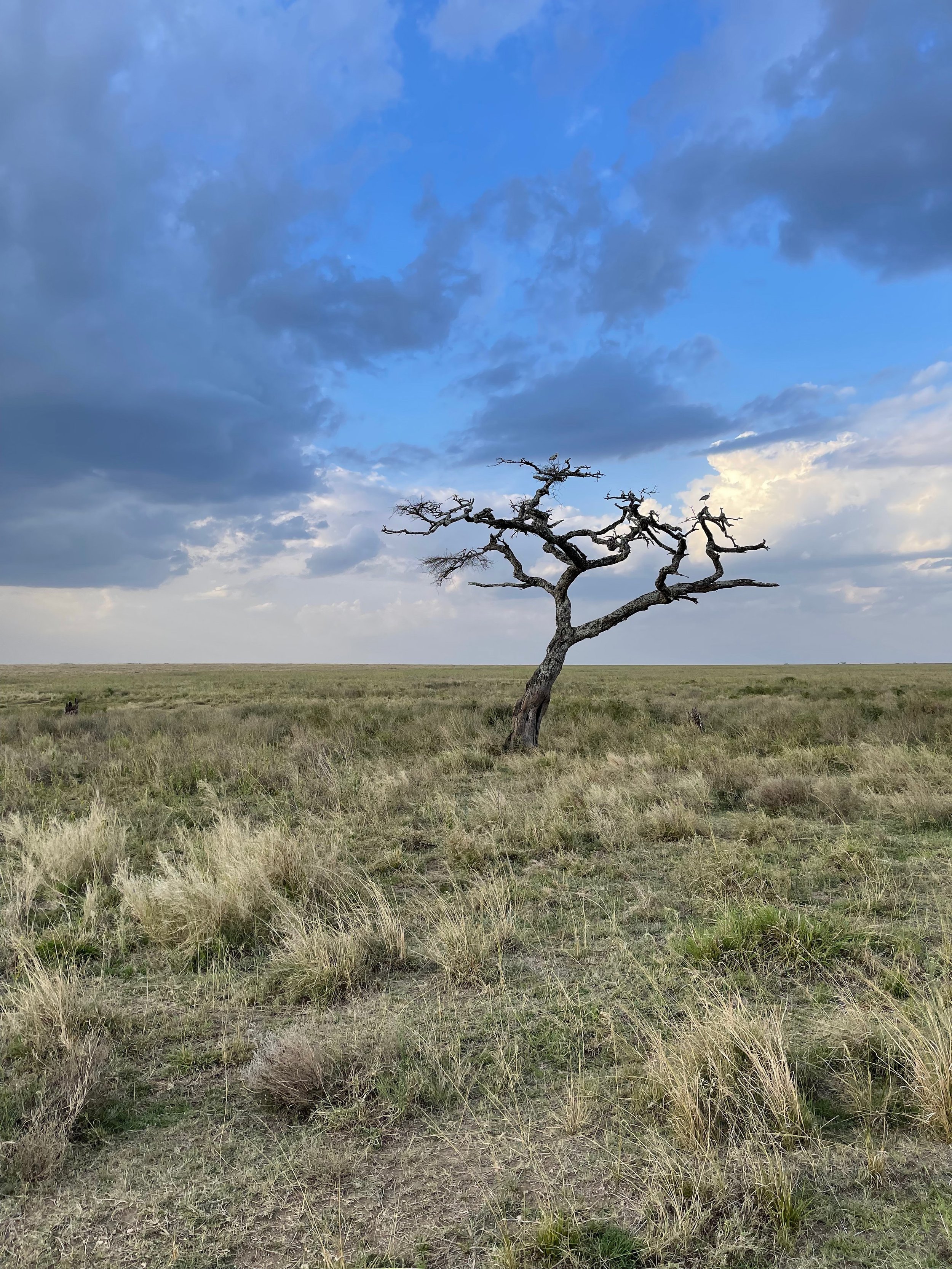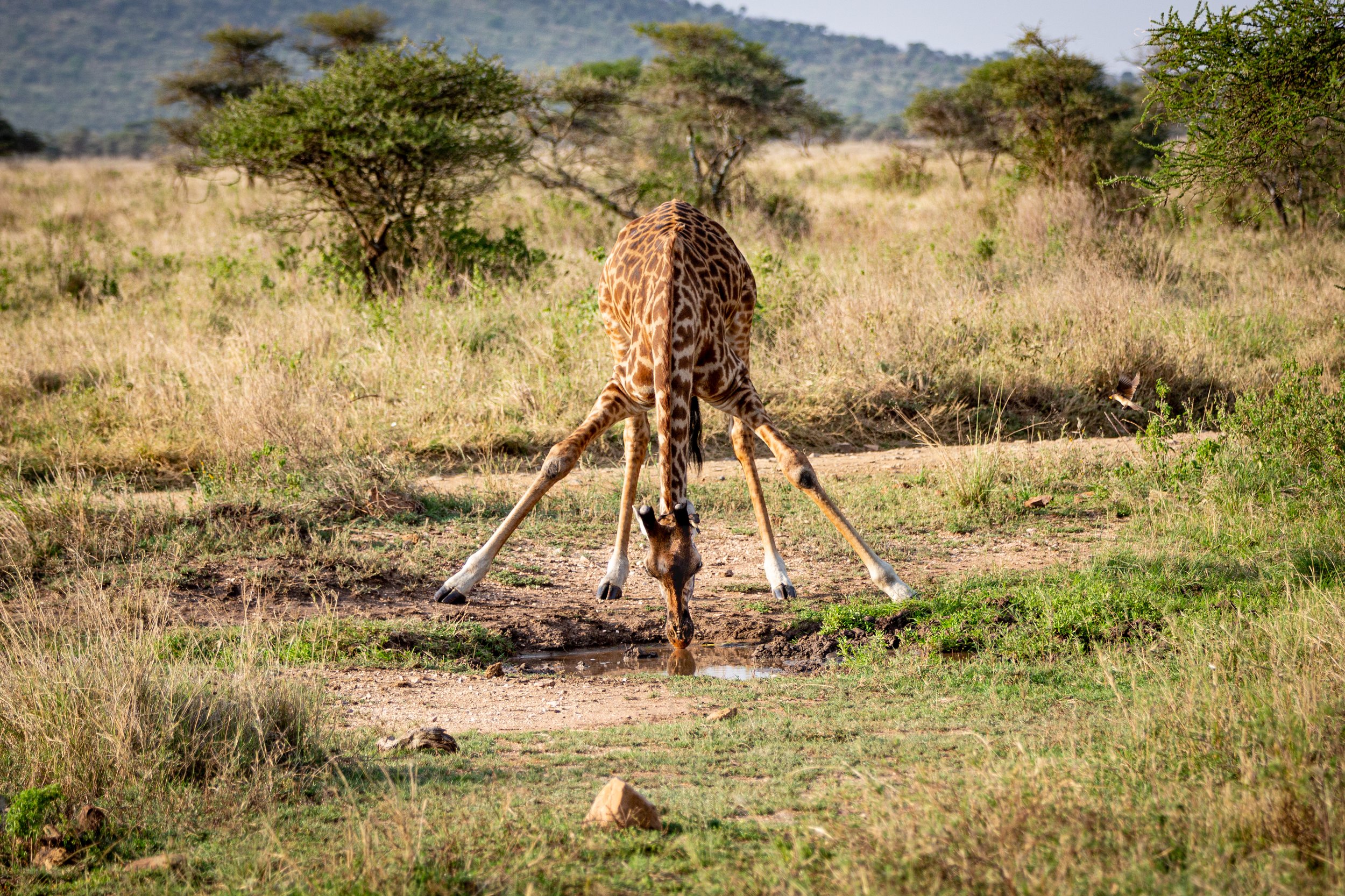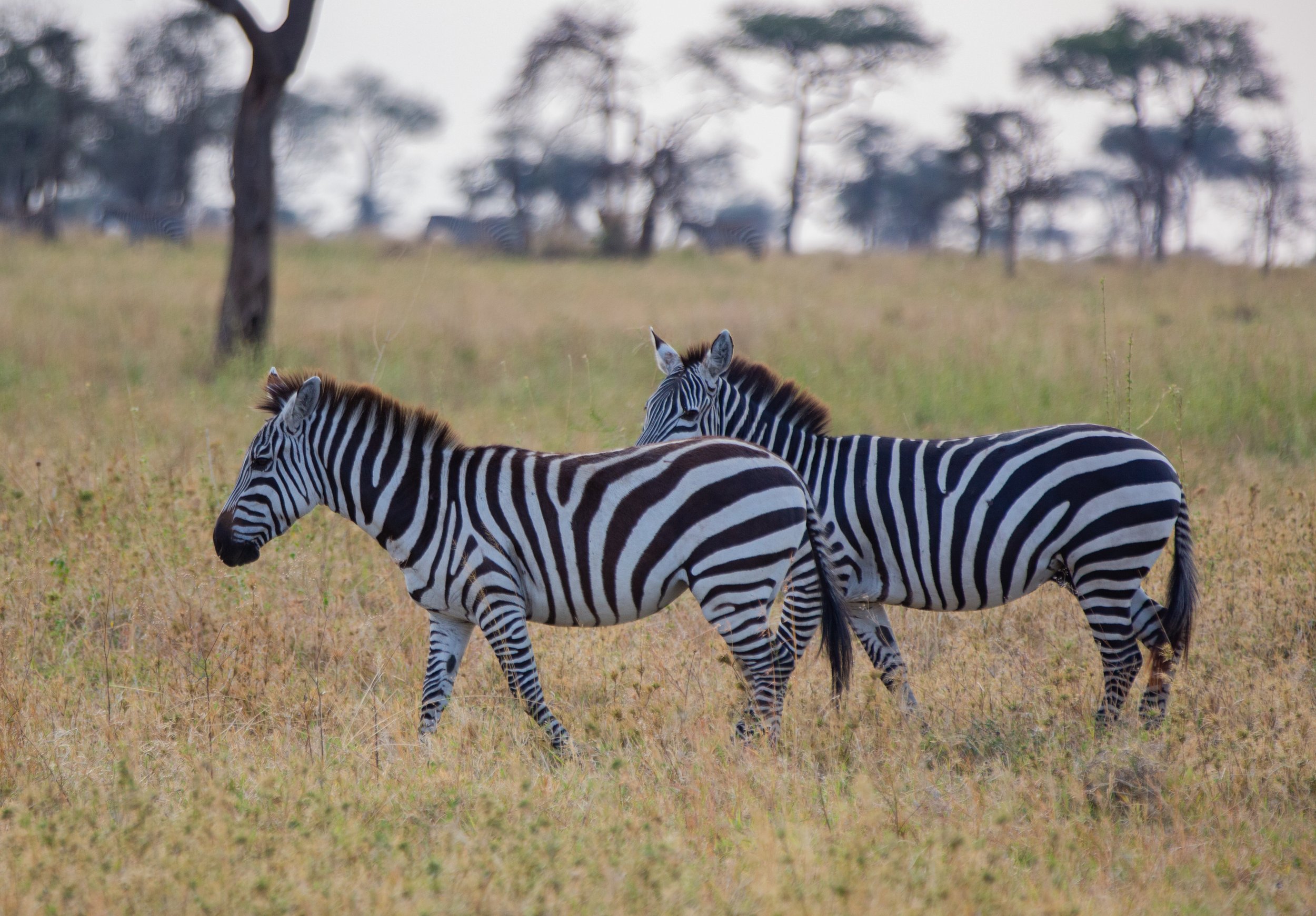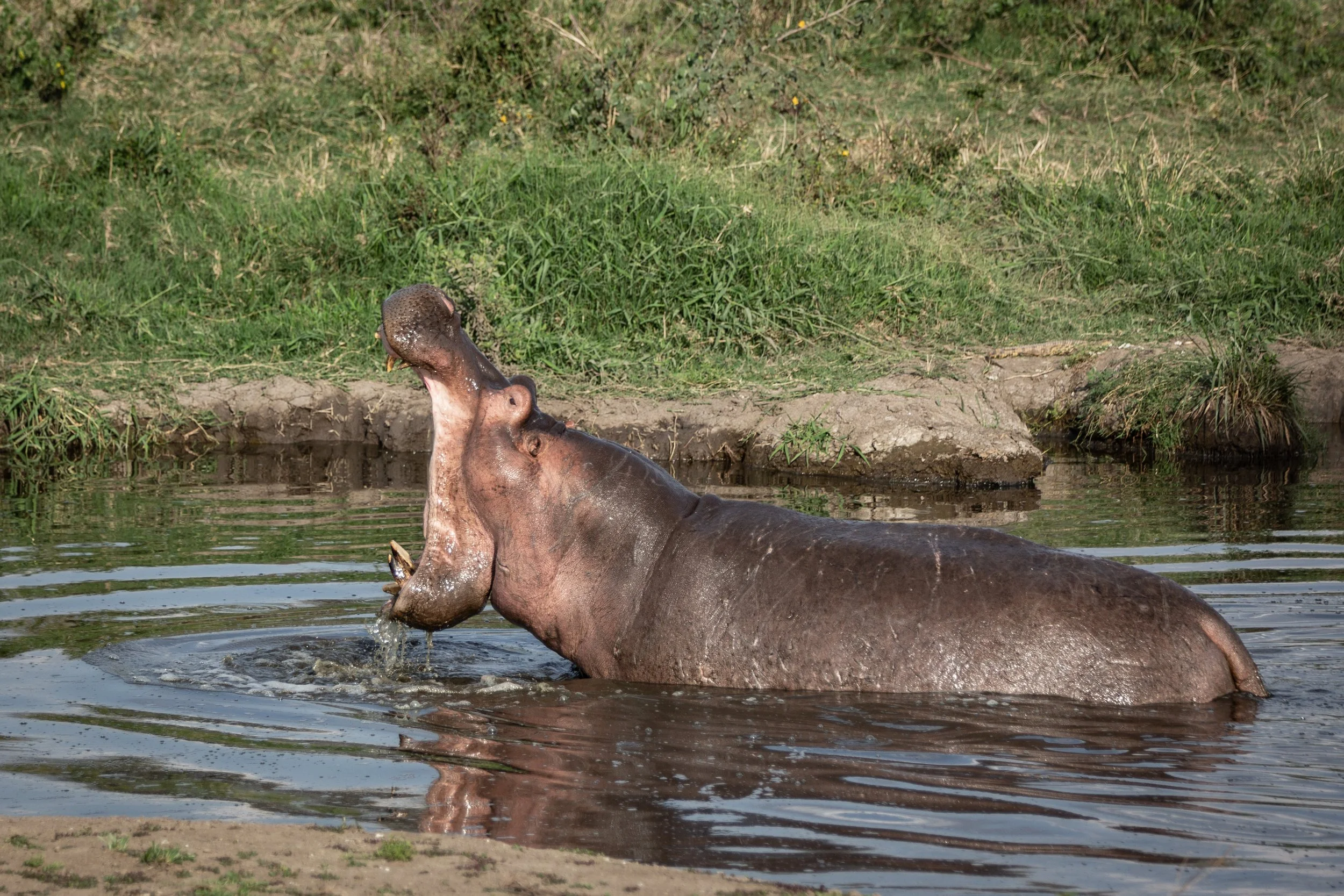Chasing leopards in the Serengeti
I blink and squint my eyes and try to parse the dense leaves from what might be a fur coat.
Yesterday, a bit of disappointing reality sank in at the realization that my wildlife-spotting skills are dismal. On more than one occasion, Jonas, my safari guide, stopped the jeep to point out an animal, an animal so hidden from my eyes that he needed to take a photo of it with his camera and then zoom in to show it to me on the screen. To my chagrin, he still needed to reference nearby trees and rocks so I could get my bearings. But I am determined to not accept the fate of being a hopeless animal spotter.
We circle the jeep around and approach the tree from the other side; maybe a different view will unveil the leopard. I meticulously audit the branches left to right, going slow at first because I want to be thorough. But the more my anticipation builds, the more I dart my eyes. Even with Jonas’ eagle eyes we don’t see anything. “It must have moved on,” he says.
Much of the adventure in a safari comes from these no-guarantee searches. The guides and drivers communicate with each other over the CB and share tips of where various animals are. That doesn’t automatically mean you’re going to get to see them though. Bouncing in a jeep, crisscrossing dirt packed roads, sans all the safety bars and glass — the anticipation of encounters with the most iconic animals in the world, is an adrenaline-fueled thrill all its own.
This is my inaugural safari, and I am experiencing firsthand that life is always on the move in the Serengeti. One morning, elephants appear in abundance, one parade after another, coming to play in the watering holes you just happen to be at. Then, that same afternoon, every elephant meanders to the other side of the park and only zebras and wildebeests make an appearance. The zebras munch on the tall grass, looking out for predators, while the wildebeest, their best friend and ally, eat the short grass and use their keen sense of hearing to aid in the defense. Kopjes, the movie-famous rock outcroppings, might support a pride of sunning lions one day; the next, only lizards and the lazy rock hyraxes. You can drive around in vain for hours if you are searching for one particular animal.
After our failed attempt to spot a leopard, we began the hour or so drive back to camp. The sun, getting lower in the sky, cast a warmth across the savanna. Ahead the most majestic solitary male elephant came into view. Too old to stay in the natal herd, bulls usually roam alone or in small groups with just one or two other males, always on the prowl for fertile females so they can spread their seed. This male stood close to the road where we would pass. I sprung up to stand in the seat, and Jonas stopped the jeep and cut the engine, careful to keep a non-invasive distance. Dry grass gets ripped out of the ground as the mighty animal sweeps his trunk down low. He curls it up, bringing the grass to his mouth for a tasty bite. Smallish, healthy tusks protrude; he is still on the younger side. Unphased that we were watching, he flaps his ears to cool his body. He takes a step, huffs loudly, and sweeps the ground again for another bite. A lone Marula tree stands in the distance, and the low-hanging sun casts the elephant in a golden glow. Missing out on the leopard means I get to see this. I make some of the best photographs of the entire trip.
Midway through the following day, chatter and static increase through the CB radio. I don’t understand Swahili, but soon enough Jonas cranks the engine and tells me another safari guide has spotted a female leopard. My sock feet scramble down from my back seat lookout, and I sit. I hold one camera in my lap and place my hand securely on the other on the seat beside me. The excitement builds as we bump and bounce and kick up a dusty wake behind us.
A few minutes later, we pull up beside several other safari jeeps gathered around a tree. She’s up there somewhere, but I don’t see her. I don’t see anything. Jonas directs my eyes to a lifeless gazelle draped over one of the limbs. “That’s her kill,” he says. “She’s right there.” I spring back up on the beige seats of the pop-top jeep, poised with my camera pre-focused on where I hope she might emerge. I bob and weave my head for a different view. She is in complete stealth mode among the dappled shadows and tangle of limbs, leaves, and dangling fruit. The sleek spots that sometimes work in (other) peoples’ fashion statements perform stunningly when on a concealment mission in the Serengeti. The branches, the angle, and the enormous sausage-shaped fruit of the Kigelia tree become ideal accessories to keep her hidden.
Even though more jeeps have arrived, everyone is quiet. Suddenly a crack breaks the silence, and bones crunch between jaws. That poor, slow gazelle. I inhale and hold my body very still, my head tilts forward, ever so slightly, and I fixate on the noisy feast and how it found its way to the tree. I still don’t see her.
We wait. She snacks.
When she repositions herself for a better gnaw on her lunch, I catch glimpses of her spots. I frantically fire off a dozen or more shots in case this is my only chance, knowing good and well these aren’t even close to the images I want. Jonas tells me to hang on. He cranks up the jeep and eases us to a side view of the tree. We wait from our new location, still not seeing much of anything.
After twenty minutes or an hour — I’m not quite sure — the leopard takes a break and eases down to an open branch. Her eyes, piercing green, stare straight at me. I release the shutter and exhale. She’s beautiful, fierce, and elusive — a tiny spot of blood still on her chest, the evidence from her most recent victim.


